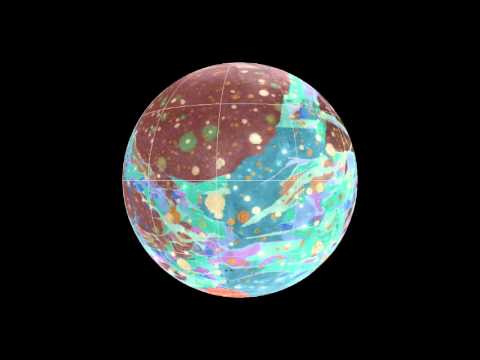This is a video clip of what Ganymede looks like, based on images from NASA’s Galileo orbiter. The US Geological Survey has classified the surface of Ganymede into the types of terrain. The brown regions are those that are heavily cratered and much older than the light shaded regions that are smoother with few craters. These lighter shaded regions are believed to be formed by flooding of the surface with water coming from faults or even cryo-volcanos that have taken place over billions of years. Perhaps even tectonic processes are at work with some crustal ice sheets being forced downward by the emergence of newer icy material. Over 8 years at Jupiter Galileo spacecraft made 6 close flyby of the Ganymede and detected a magnetic field coming from the moon itself. In addition, the best models of Ganymede from the Galileo data showed a deep ocean under a thick ice crust.
Credit: NASA, USGS
Share
Jupiter’s Moon Ganymede04:33
Published on January 24, 2018

